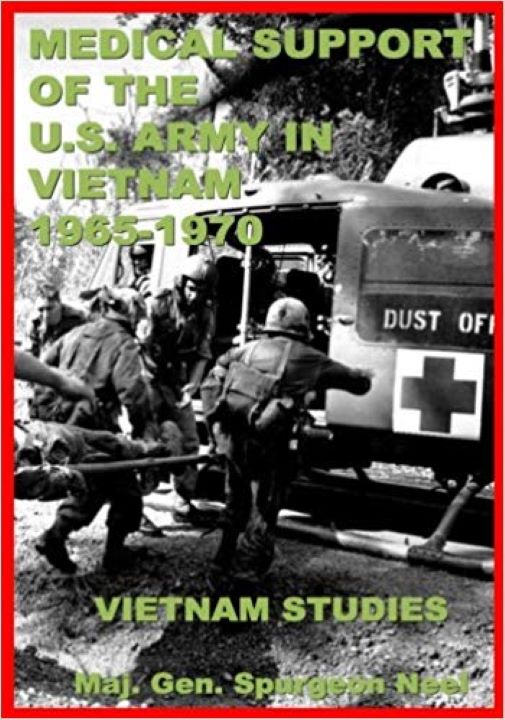As written by the Army’s Deputy Surgeon General in 1972 as war raged in Vietnam. Full text in book’s front matter. Full understanding of medical operations in Vietnam requires some appreciation of the nature: of the country and of the war that has been waged there. The Republic of Vietnam lies entirely within the Tropics. Saigon is halfway around the world from Washington, D.C. There is a 12-hour difference in time between the two cities. The nearest off-shore U.S. hospital is almost 1,000 miles away at Clark Air Force Base in the Philippines. The nearest logistical support base is about 1,800 miles away in Okinawa. The nearest complete hospital center is in Japan, some 2,700 miles distant. Patients being evacuated to the United States must travel some 7,800 miles to reach Travis Air Force Base in California, or almost 9,000 miles to reach Andrews Air Force Base, near Washington, D.C. Because of these distances. even with modem air transport, the need (or self-sufficiency in the zone of operations is greater than that normally required within a combat zone. This fact is reflected by a higher ratio of combat service support troops (including medical) to combat troops than is normally provided in more conventional situations. Vietnam is actually a combat zone combined with the advanced section of a communications zone. The distance of Vietnam from the logistical support base also has an adverse effect on the efficiency and morale of troops newly arrived in-country. . . . The conflict has involved highly mobile, small tactical units, and has not been a war of mass movement of major military formations. Search and destroy operations by small units from relatively secure base areas and for relatively short periods of time have been characteristic. There has been a high reliance on organic Amy air mobility for the conduct and support of these operations. The Army Medical Department’s deployments and procedures have reflected these tactical realities. Treatment facilities located in base areas receive casualties by air from operating combat elements. Because there was no need to move frequently, it was practicable to construct semi-permanent medical facilities, thereby allowing the utilization of more sophisticated equipment and providing a general upgrading of the level of medical care.
210 pages





